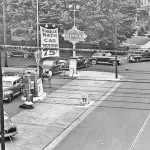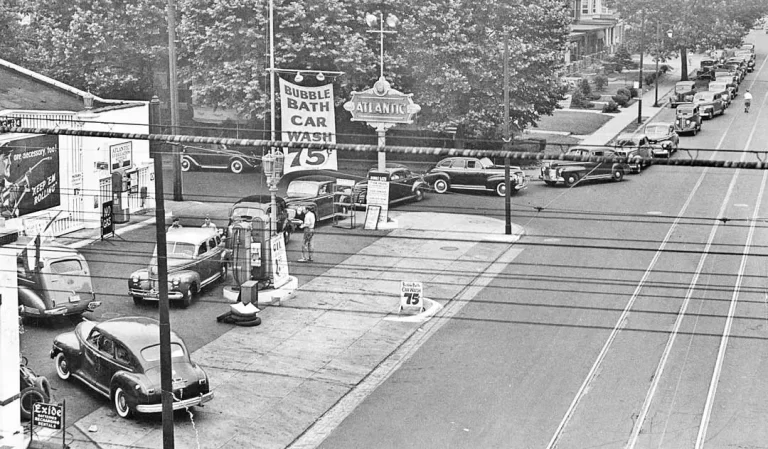The Cash for Clunkers program, officially titled the Car Allowance Rebate System (CARS), was designed to stimulate economic activity by incentivizing vehicle owners to trade in their older, less fuel-efficient cars for new, more environmentally friendly models. In California, this initiative aimed to boost the automotive industry while promoting cleaner air through reduced emissions. Economic benefits of the program included a surge in auto sales, which supported jobs throughout the car manufacturing supply chain and retail sectors. This uptick in sales provided a short-term stimulus to California’s economy, as well as potential long-term environmental advantages.
However, some drawbacks accompanied Cash for Clunkers. Critics argued that the program’s cost to taxpayers was significantly high when considering the net gain in employment. Furthermore, there was a debate on whether the environmental impact was as positive as projected, given that manufacturing new vehicles also generates considerable emissions. Additionally, removing used cars from the market may have inadvertently increased used vehicle prices, posing challenges for low-income buyers who couldn’t afford new cars. These factors necessitate a comprehensive examination of cash for clunkers CA effects on the state’s economy and environment.
Key Takeaways
- The program incentivized the purchase of more fuel-efficient cars.
- It provided a short-term economic stimulus to the auto industry.
- The program’s long-term economic and environmental impacts were debated.
Economic Impact of Cash for Clunkers
The Cash for Clunkers program, officially known as the Car Allowance Rebate System (CARS), significantly affected California’s economy, from stimulating consumer spending and boosting the auto industry to affecting environmental and long-term economic growth.
Stimulating Consumer Spending
The program offered substantial financial incentives to consumers, aiming to stimulate retail sales. These rebates encouraged car owners to replace their old vehicles with new, more fuel-efficient models, leading to increased consumer spending. The immediate injection of funds into the economy prompted a surge in automobile sales, directly impacting California’s GDP.
Boost to the Auto Industry
For the auto industry, the Cash for Clunkers program was akin to a fiscal stimulus. Dealerships saw a rise in foot traffic and sales volumes. The rebates, which sometimes reached $4,500, directly benefited manufacturers and retailers by offsetting the dip in auto sales due to the economic downturn. This was a targeted move to jump-start a key sector within the state’s economy.
Environmental and Energy Implications
By incentivizing the purchase of fuel-efficient vehicles, the program aimed to reduce environmental impact and encourage energy savings. The shift towards cars with better mileage decreased the carbon footprint, aligning with California’s aggressive environmental policies. However, the program’s long-term environmental benefits were debated, as the production of new vehicles also entails energy consumption and resource usage.
Long-Term Economic Growth
The federal government’s initiative was designed to provide a short-term boost; however, its long-term impact on sustainable economic growth has been questioned by some economists. While the program supported immediate employment in the auto sector, the overall cost per job created was relatively high, and the stimulus’s effect was somewhat transitory, with automobile sales normalizing post-program. Long-term economic growth depends on consistent and diversified fiscal policies beyond such temporal measures.
Critiques of the Program
While the Cash for Clunkers program aimed to refresh the automotive fleet and boost the economy, several critiques have emerged regarding its efficacy and broader impacts on California’s economy.
Cost-Effectiveness Concerns
Critics argue that the fiscal outlay for the Cash for Clunkers program was substantial, with benefits not necessarily justifying the expense. Economic studies suggest the cost per job created was significantly high, casting doubts on its cost-effectiveness.
Temporary Market Distortion
There was a concern that the program led to a temporary spike in vehicle sales, which postponed future sales rather than generating additional demand. This resulted in a distortion of the auto market that corrected itself once the program concluded, with little long-term economic benefit.
Limited Environmental Gains
The program’s impact on reducing carbon emissions and fuel economy improvements has been questioned. Although older vehicles were replaced, the overall environmental benefit was not as substantial as anticipated, partly due to the limited participation of electric cars in the program during its execution.
Economic Disadvantages for Low-Income Consumers
Low-income households often could not benefit from the program as it required purchasing new, often more expensive, vehicles. This left many without the means to participate, as they could not afford to trade up, even with the incentive. The Cash for clunkers CA initiative did include car retirement programs aimed to assist, but accessibility remained a challenge for the economically disadvantaged.
Conclusion
The Cash for Clunkers program had a mixed impact on California’s economy. It provided a temporary boost in vehicle sales, which positively affected some employment sectors. However, the program also entailed a significant government expenditure, with debates on its cost-effectiveness and long-term environmental benefits. As California assesses future policies, lessons from this initiative highlight the importance of weighing immediate economic gains against fiscal responsibility and environmental sustainability.

















